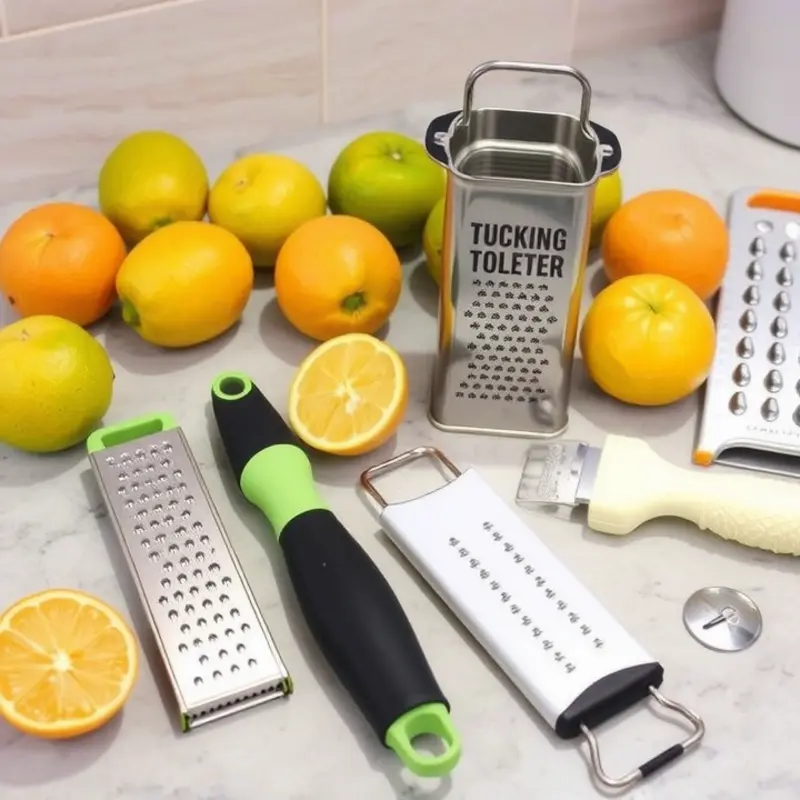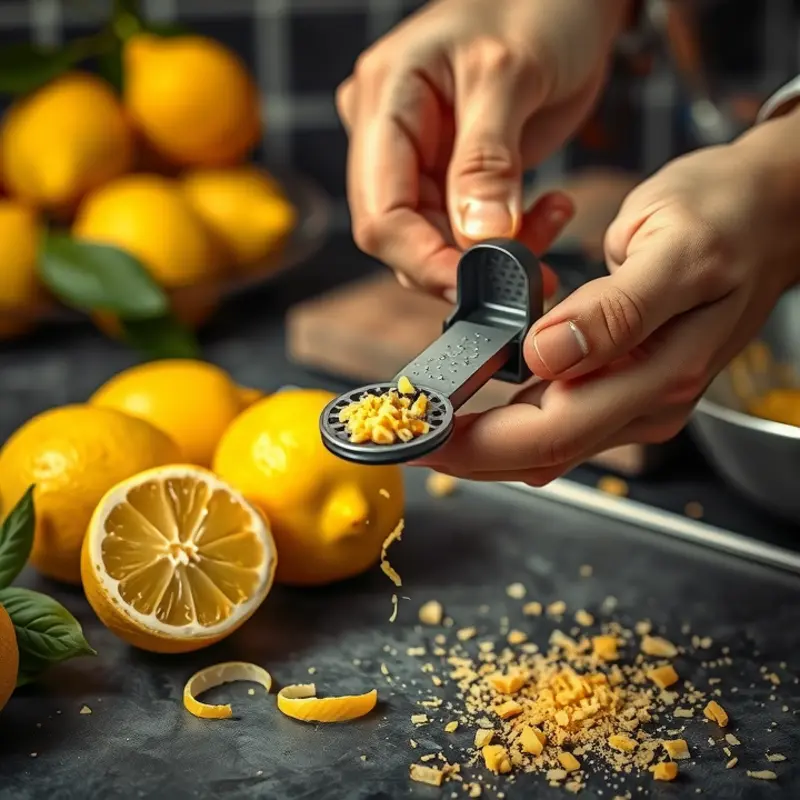Zesting citrus fruits elevates the flavor of your dishes, bringing brightness and freshness that can transform any recipe. Whether you’re a beginner or an experienced home cook, mastering the art of zesting can significantly enhance your culinary skills. This guide will provide clear and practical tips for zesting lemons, limes, and oranges, ensuring your zesting technique is efficient and effective, making your cooking more vibrant and delicious.
Choosing the Right Tools for Zesting

To master the art of zesting, it all starts with selecting the right tools. Equipping yourself with the appropriate zesting tool can significantly impact the ease and quality of your culinary creations. Let’s explore the range of tools available and how to choose what best fits your zesting needs.
Microplane Rasters are the most popular choice among cooking enthusiasts. This long, slender tool, equipped with tiny, sharp blades, is perfect for creating fine, feather-like zest. It’s ideal for extracting flavorful oils from the thin surface of citrus fruits without touching the bitter white pith beneath. When using a microplane, hold your citrus at an angle and lightly graze it across the blades. Remember to apply minimal pressure for even and efficient results.
Zesters are another valuable tool. Unlike microplanes, traditional zesters have a series of small, sharp holes at the top. These tools create thin strips or curls of zest. They add aesthetic appeal and a burst of flavor to cocktails or desserts. A zester is perfect if you’re aiming for decorative strips rather than fine shavings. To utilize it effectively, pull the zester along the surface of the fruit, allowing the holes to collect thin, elegant strips.
For those seeking versatility in the kitchen, Vegetable Peelers can also serve as a handy zesting tool. Although primarily used for peeling, their broad blade allows the removal of thick zest strips. These strips can then be finely sliced to your desired thickness. However, when using a peeler, be cautious of the white pith. It’s easy to cut too deeply, so maintain a steady hand and a light touch.
Box Graters are another option, commonly found in every kitchen. They offer a coarse grate suitable for zesting, though not as efficiently as a microplane. If this is your only option, choose the side with the smallest holes. Be mindful of where your zest collects; empty it frequently to avoid clumping and ensure a fine grate.
Finally, understanding the differences between these tools and recognizing when to use each will aid greatly in your zesting endeavors. Each has its unique application, and selecting the right one depends entirely on your specific cooking needs. A microplane might be your tool of choice for baking, while a traditional zester could be ideal for garnishing a cocktail.
Exploring the connection between flavor enhancements and kitchen practices can also be insightful. If you’re interested in maximizing flavor without additional salt, consider visiting this guide to flavor boosters.
Remember, the right tool not only enhances the efficiency of zesting but also preserves the intense flavor locked within the zest. Empower your culinary creativity by ensuring your zesting toolkit is equipped with the best choice for your zesting aspirations.
Step-by-Step Zesting Techniques

To unlock the robust flavors of citrus fruits without the unwanted bitterness, selecting the right zesting technique is crucial. Whether working with lemons, limes, or oranges, the goal is to extract only the colorful outer layer. This section guides you through practical techniques for zesting each of these citrus fruits effectively.
Zesting Lemons
Lemons possess a bright, tangy zest perfect for lifting flavors in a dish. Start by washing the lemon thoroughly to remove any wax or pesticides. Using a microplane or a fine grater, gently rub the lemon against the tool, rotating as you go. Focus on applying minimal pressure to avoid the bitter white pith underneath. Collect the zest in a bowl and use immediately for the best aroma and brightness.
Zesting Limes
The challenge with limes lies in their thinner skin. After washing, use a microplane for the most control. Hold the lime firmly in one hand and the microplane in the other. Using short, swift motions, zest the lime while rotating it to prevent over-zesting one area. Again, steer clear of the pith that lies below the green peel to maintain the lime’s vibrant taste.
Zesting Oranges
When zesting oranges, you’re dealing with thicker skin, making them somewhat easier to handle. Wash the orange thoroughly. A vegetable peeler can be effective here. Lightly peel away the outermost layer, avoiding a deep cut into the pith. If you end up with pith, run a knife around the edge to remove it. You can then finely chop the zest if needed for shorter pieces. This method ensures you capture the sweet and aromatic essence without any bitterness.
Practical Tips for All Citrus
- Zest Before You Juice: If you’re using both zest and juice, zest the citrus before juicing. Once juiced, a citrus fruit becomes challenging to handle.
- Storage: For best results, use zest fresh. However, it can be stored in an airtight container in the freezer for up to a month.
- Neutralizing Bitterness: If you accidentally zest through the pith, consider using zest in recipes requiring cooking, as heat can mellow bitterness.
For complementary cooking tips and enhancing flavors without added salt, explore this guide on flavor boosters. Integrating zest into your meals will unlock not just flavors, but also opportunities to explore a vibrant palette of culinary creativity.
With these techniques and tips, even any novice chef can enhance their dishes using citrus zest. As we continue to journey through mastering citrus in the kitchen, understanding how to manage and maximize zest becomes an invaluable skill.
Final words
Mastering citrus zesting not only enhances your cooking but also adds a touch of creativity to your dishes. With the right tools and techniques, you’ll be able to infuse your meals with zesty flavors that delight the palate. Remember, fresh zest is a powerful ingredient that can elevate everything from desserts to savory dishes. Keep practicing these tips, and soon, zesting will become second nature, turning your ordinary meals into extraordinary culinary experiences.







